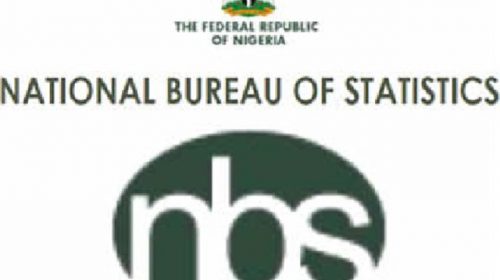Nigeria’s Inflation rate rises to 14.89% in November …. NBS

By Ngozi Onyeakusi—- The National Bureau of Statistics (NBS) has disclosed that the consumer price index, which measures inflation has risen to 14.89 per cent (year-on-year) in November 2020.
This represents 0.66 percentage points higher than the rate recorded in October 2020 (14.23 per cent).
The Bureau in its Consumer Price Index for November 2020 Tuesday revealed that increases were recorded in all Classification of Individual Consumption According to Purpose divisions that yielded the headline index.
On month-on-month basis, the headline index increased by 1.60 per cent in November 2020.
This is 0.06 percentage points higher than the rate recorded in October 2020 (1.54 per cent).
The percentage change in the average composite CPI for the twelve-month period ending November 2020 over the average of the CPI for the previous 12-month period was 12.92 per cent, representing a 0.26 percentage point increase over 12.66 per cent recorded in October 2020.
The urban inflation rate rose to 15.47 per cent (year-on-year) in November from 14.81 per cent recorded in October, while the rural inflation rate rose to 14.33 per cent in November from 13.68 per cent in October.
On a month-on-month basis, the urban index rose by 1.65 per cent in November, up by 0.05, from 1.60 per cent recorded in October, while the rural index also rose by 1.56 per cent in November, up by 0.08 from 1.48 per cent recorded in October.
The corresponding 12-month year-on-year average percentage change for the urban index was 13.65 per cent in November.
This is higher than 13.29 per cent reported in October, while the corresponding rural inflation rate in November is 12.35 per cent compared to 12.09 per cent recorded in October.
At a recent Bankers Night in Lagos, the Central Bank Governor, Godwin Emefiele, said inflationary pressure persisted during the year due to several factors.
Also, the International Monetary Fund had said the COVID-19 pandemic was exacting a heavy toll on the Nigerian economy, which was already experiencing falling per capita income and double-digit inflation, with limited buffers and structural bottlenecks.







Leave a Reply